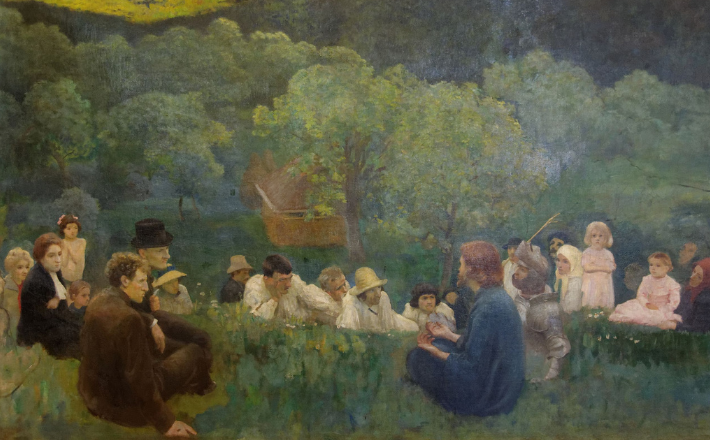Commentary on 1 John 3:1-3
Although there are links between these three verses and the previous section, it is unclear where to put the break in the logic of the writer’s thinking. The two verses preceding this new chapter speak of Christ’s appearance and the believer being in a filial relationship with God:
And now, dear children, continue in him, so that when he appears we may be confident and unashamed before him at his coming. If you know that he is righteous, you know that everyone who does what is right has been born of him. (1 John 2:28-29)
Yet the opening invocation to “behold” in 3:1 suggests a new trajectory. The text itself focuses on these two key ideas: that those who believe in Christ have experienced a change in their status so that they are called God’s children and that the appearance of Christ will bring about another change insofar as believers will now experience him in a new way. Thus, the experience of God is both present and future.
How the love of the Father is manifest is left unclear. Often “love” is imagined by readers as a feeling, so this passage can be interpreted by believers, perhaps most intensely among mystics, as having intense or at least warm, comforting internal sensations of connection with God. Such love provides security, or what modern psychology might call “secure attachment” to a parental figure. But love (agape) was also very practical, expressed through a sense of connection and belonging to others in community, something that resonates through the latter part of 1 John (3:11-18; 4:7-21). It may be the sense of belonging together in a group that the auditors of the letter are experiencing as the practical manifestation of the “lavish love” given by the Father (verse 1). Yet there is hope in a future in which even this security will be surpassed when one has the full experience of God through Christ revealed.
No matter how lavish this love is, the believer’s experience of God is in the present and thus it is still incomplete. The letter writer looks to an even richer future in a threefold sequence of events around the coming of Christ (verse 2):
- he will appear
- we shall see him as he is
- we shall be like him
Thus, the believer’s relationship with God is both in the present and for eternity, with the latter beginning with the return of the risen Christ to earth, the parousia in Johannine language (although only used in 2:28 in 1 John).
God’s loving adoption of the believer comes at a cost: “because of this, the world does not recognize us” (verse 2). The cause behind this nonrecognition is not directly apparent; is it believers’ status as “children” or is it the love that they are now experiencing, or perhaps both? The “world”—that is, outsiders—do not recognize the connections the believers have with God and with one another, perhaps through willful blindness or jealousy. This is linked to broader themes in 1 John, where the writer has just finished warning his readers about the presence of antichrist(s) who seceded from the community (2:18-19). In fact, much of the first two chapters of the letter focus on those who either continue to sin or have left the community, the writer’s distaste for those who will continue in the latter part of the letter. Note the plural here; there is not a singular evil figure of “the Antichrist” (as later tradition will develop it) so much as a spirit of “antichrist” that the writer sees infusing any and all opponents of Christ and this community (see also 1 John 2:18, 22; 2 John 7).
Christian theology has generally not gone the way of seeing believers obtaining divine status equal with Jesus, despite the writer’s claim here that “we shall be like him because we shall see him as he is” (verse 2). In fact, the writer avoids the Greek word hyios (“son”) for the believer, instead referring to each as teknon (“child”); it is still a familial metaphor but stops short of the language used in the Johannine writings for designating Jesus’ direct relationship to God. The implication is that of entering into the household of God, one that is not only in a loving relationship but has all the implications of coming under the protection of the father of the household (the paterfamilias). In this way, the rejection by those outside the community will matter less since connection is found with those within (see also 2:7-11; 3:11-18).
Overall, in the face of a breakaway faction that has threatened both the foundations and the structures of the community, the writer opens the second half of his letter with strong encouragement for those who have remained faithful to the group. In his eyes, this demonstrates their faithfulness to God. He assures them that God loves them dearly and has adopted them as children, holding out hope that eventually they will become like Christ at least insofar as being pure before God. He imagines here a state in which sin no longer counts against a believer, a topic that is explicated in the next section of the letter (3:4-10; see also 1:7-9).


November 5, 2023